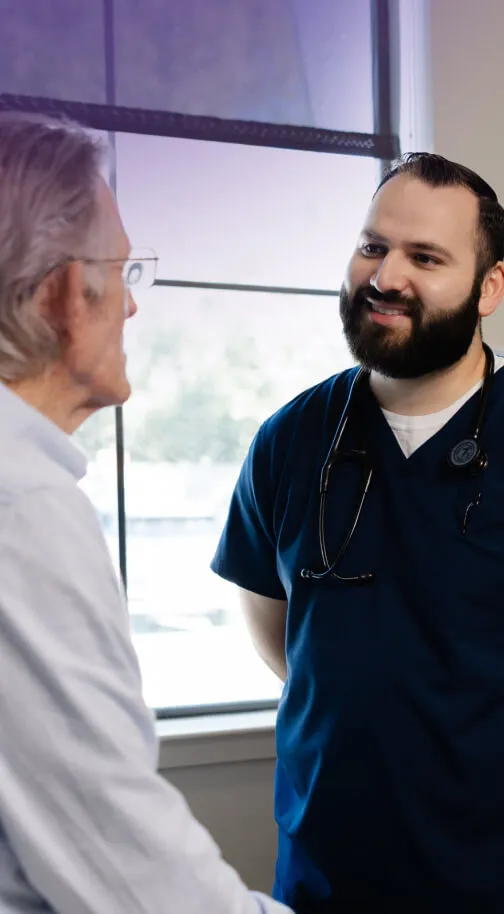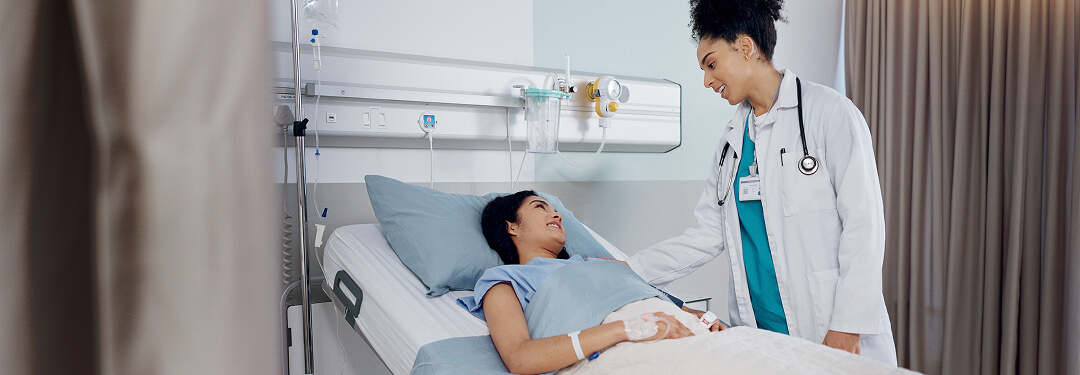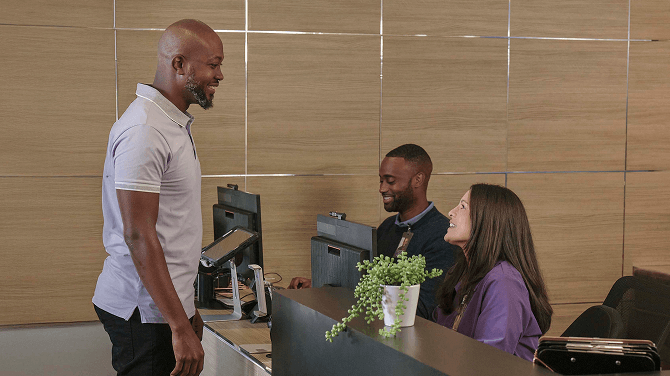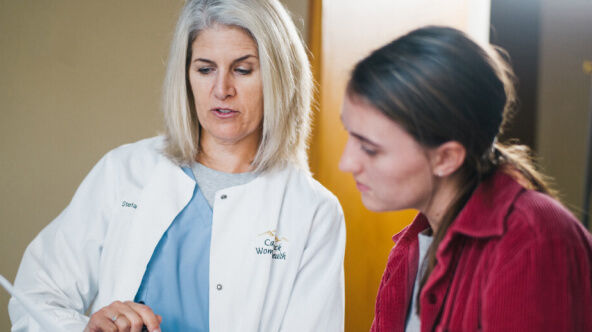Patients are changing how they think about surgical care
Clinicians don’t need a statistic to tell them more surgeries are moving out of hospitals. They’re seeing it firsthand. There are fewer inpatient cases and more outpatient consults with patients wondering where their procedure will take place — in a hospital or somewhere else?
More often than not, that somewhere else is an ASC (ambulatory surgery center).
ASCs are now one of the most common settings for outpatient procedures. In 2023, these facilities handled over half of all outpatient surgeries. The volume of procedures has increased 13% since the pandemic, and it's not slowing down. Over the next decade, that number is expected to climb by another 20% or more.1
So, what’s pulling patients toward these more specialized facilities? And what should clinicians be considering as this shift continues?
Patients want more than just outcomes, they expect a positive patient experience
There’s been a steady change in how patients think about care. They’re more informed, especially financially. With high-deductible plans, Medicare Advantage growth, and easy access to cost-comparison tools, patients are more active in making choices about their care.
They’re thinking about more than just referrals and outcomes. They’re taking into account time, money, convenience, and overall experience.
For many procedures, ASCs excel here by providing lower costs, easier logistics, and, frankly, less stress. They’re not perfect for everything, but when options exist for high-volume procedures, patients tend to prefer them. People want care that’s efficient and predictable, and they’re making decisions based on that.
What patients value about ASC care
With over 6,000 Medicare-certified ASCs operating in the U.S., outpatient surgical care has become more of the norm. Here's what makes the model appealing from the patient perspective:
Lower out-of-pocket costs
One of the biggest reasons patients choose ASCs is simple, it costs less. That difference shows up directly in patient bills. Compared to hospital outpatient departments, ASCs can reduce costs by over 30%. Facility fees are often significantly lower, and in Medicare or commercial insurance scenarios, total cost savings can range between 28% and 36%.2 Some services even come with little to no copay, especially for recurring needs like endoscopies or injections.
A faster and more calm experience
ASCs are streamlined facilities built for efficiency. This means faster scheduling, shorter wait times, same-day discharge, and recovering at home. Even small things like parking and navigating the building can be easier. For patients managing work, caregiving, or just daily life, that kind of convenience carries weight.
A setting that feels safer
Post-pandemic, some patients may still feel uneasy in large healthcare settings — associating them with exposure risk. Ambulatory surgery centers, by contrast, can feel quieter and more controlled. This simplicity can help reduce anxiety and drive satisfaction.
In a comparative study, patients rated freestanding ASCs as a more favorable experience than hospital outpatient departments and reported higher satisfaction overall.3 It’s not only about outcomes, but also how the process feels along the way.
More personalized care
Because ASCs specialize in a narrower set of high-volume procedures, they deliver more personalized care with fewer handoffs. This builds continuity and trust. Patients are more likely to see familiar faces throughout their care, from check-in to follow-up, leaving a lasting impression. That’s not something most health systems can simply replicate at scale.
Hospitals remain essential for complex care. But for the growing number of procedures that can safely shift outpatient, ASCs are redefining what patients expect.
Health plans are helping accelerate this shift
Medicare Advantage is helping shape site-of-care behavior. Plans are incentivized to lower costs without compromising quality, and ASCs deliver on both.
There’s less billing complexity and more price transparency. For patients navigating a healthcare system that often feels opaque, that clarity builds confidence.
But there’s more to it than just dollars. ASCs support faster turnarounds, clearer documentation, and better communication touchpoints. For providers in value-based contracts, that’s a strategic advantage.
What this means for your practice or system
Specialties like orthopedics, GI, ophthalmology, and pain management are increasingly centered around ASC delivery.
Numerous outpatient surgeries are already happening in ASCs, and networks are adjusting to keep pace. Health systems are forming partnerships. Independent providers are seeking privileges. Patients are asking questions.
If you’re tied into an ASC, make sure patients know that. Don’t assume “outpatient” means anything specific to patients. Explain it in plain terms and be clear about where it’s located, what the full experience will be like, the digital tools used for scheduling, billing, and follow-up, and what it’ll cost. If any of it feels unclear or complicated, patients may start shopping around.
If you’re not yet affiliated, it’s worth asking why. Because whether or not you market it, patients are asking. And sometimes, they’re choosing other practices because of it.
Competing in outpatient surgical care starts with the setting
Outpatient volume isn’t a phase. It’s a reflection of what patients want and what the healthcare system is increasingly rewarding.
Whether you’re independent or part of a larger group, building care pathways around ASCs is a strategic response to the way care works now.
It’s about meeting people where they are: cost-conscious, time-limited, and expecting care that fits more conveniently into their lives.
Want to explore what ASC alignment could look like for your patients and practice? We’d be happy to chat.
More patient satisfaction resources
Continue exploring
1.GlobeNewswire. (2024, January 31). United States ambulatory surgery center market report 2023: ASCs respond to staffing shortages with automation and financial incentives. https://www.globenewswire.com/news-release/2024/01/31/2820749/28124/en/United-States-Ambulatory-Surgery-Center-Market-Report-2023-ASCs-Respond-To-Staffing-Shortages-With-Automation-And-Financial-Incentives.html
2.American Academy of Orthopaedic Surgeons. (2024). Research. AAOS Now Daily Edition. https://www.aaos.org/aaosnow/2024/aaos-now-daily-edition--wednesday/research/research06/
3.Becker's ASC Review. (n.d.). Patients rate ASCs more favorably than HOPDs, Leapfrog finds. https://www.beckersasc.com/asc-news/patients-rate-ascs-more-favorably-than-hopds-leapfrog-finds/













